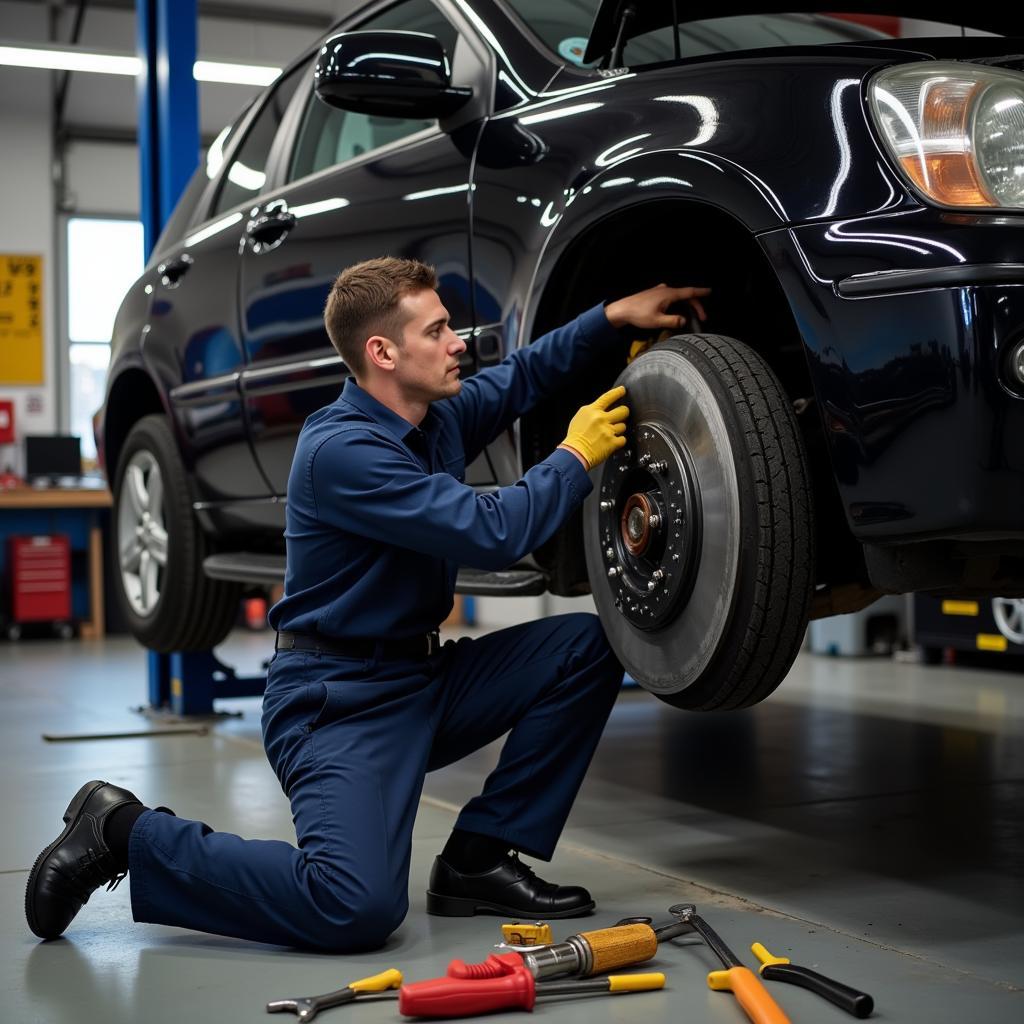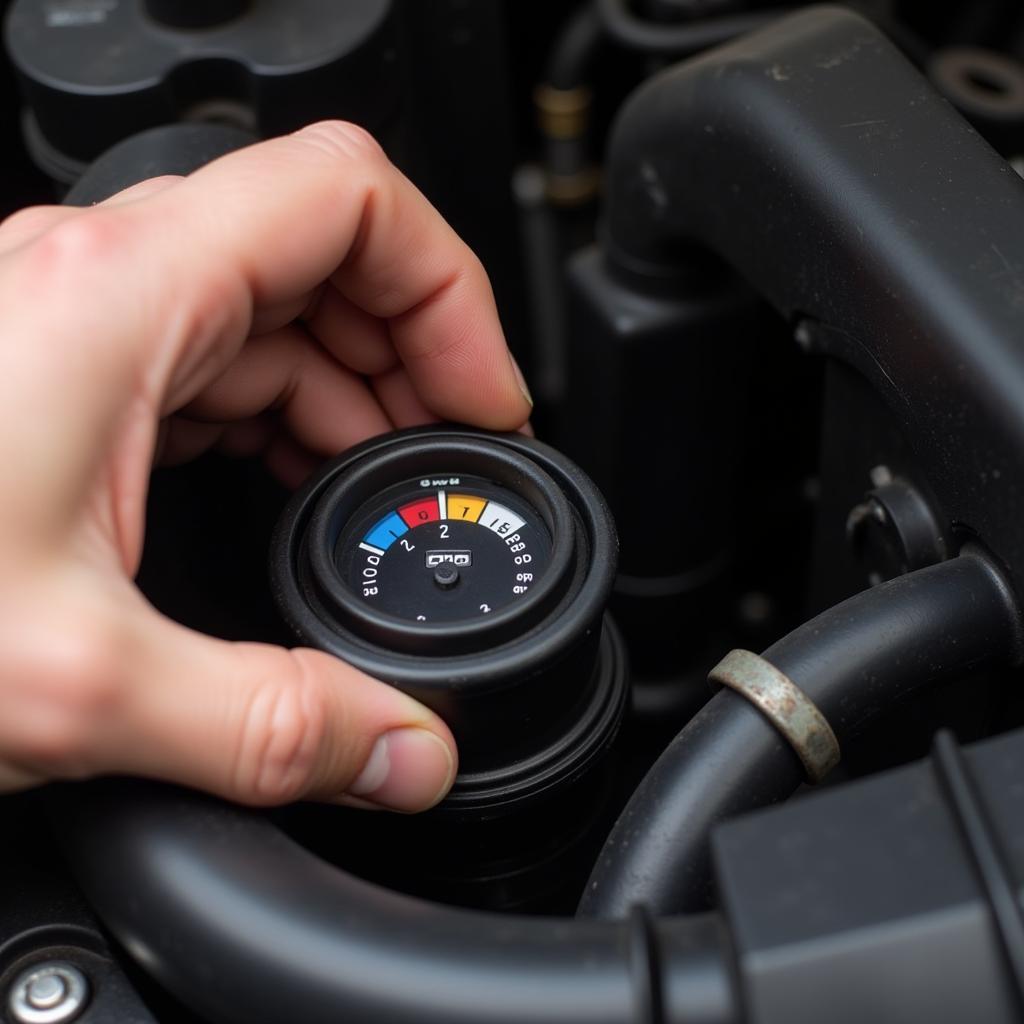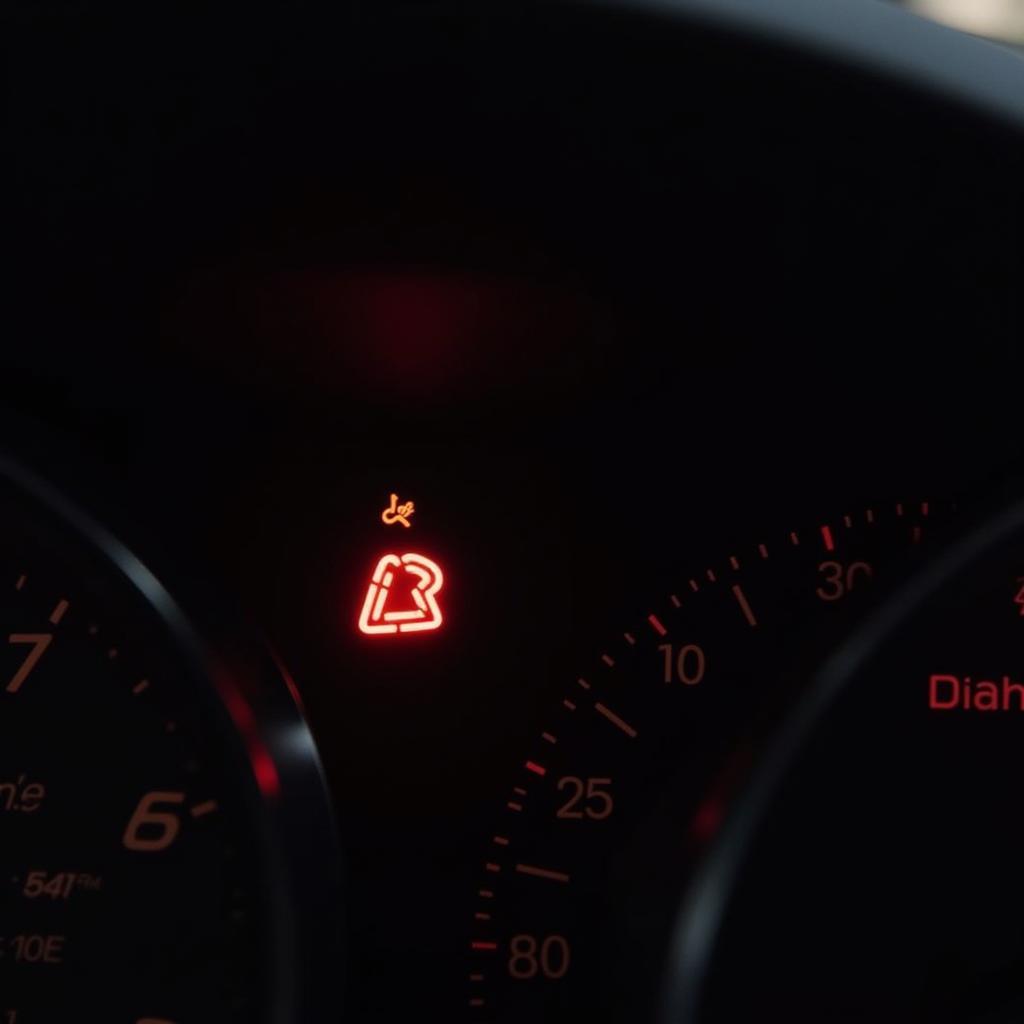A red line warning brake LED light illuminating on your dashboard is a clear indication that there’s an issue with your vehicle’s braking system. This warning signal should never be ignored as it signifies a potential safety hazard. This article delves into the common causes of a red line warning brake LED, how to diagnose the problem, and the steps you can take to rectify it, whether through DIY solutions or professional assistance.
Understanding Your Brake Warning System
Modern vehicles are equipped with sophisticated sensor networks that continuously monitor critical systems, including your brakes. When a potential issue is detected, a warning light is triggered on your dashboard. The red line warning brake LED, often accompanied by a textual warning like “Brake System” or “Check Brake Fluid”, is a serious indicator that requires immediate attention.
Common Causes of a Red Line Warning Brake LED
While a red line warning brake LED indicates a problem with your braking system, pinpointing the exact cause requires further investigation. Here are some of the most frequent culprits:
- Low Brake Fluid: This is the most common cause. Brake fluid is the lifeblood of your braking system, transmitting force from the brake pedal to the wheels. A leak in the system or worn brake pads can lead to a drop in brake fluid level, triggering the warning light.
- Faulty Brake Light Switch: Your brake lights and brake system warning light are often connected to the same switch. If this switch malfunctions, it can prevent your brake lights from engaging and simultaneously activate the red line warning on your dashboard.
- Worn Brake Pads: Brake pads naturally wear down over time. When they reach a critically thin point, a sensor embedded within the pad will contact the brake rotor, triggering the warning light as an indication for replacement.
- ABS Issues: If your vehicle has an anti-lock braking system (ABS), a problem within this system, such as a faulty sensor or control module, can trigger the red line warning brake LED.
- Parking Brake Engaged: While seemingly obvious, sometimes the simplest explanation is the most likely. Ensure your parking brake is fully disengaged as even a partially engaged brake can trigger the warning light in some vehicles.
Diagnosing the Problem
Before taking any action, it’s crucial to accurately diagnose the root cause of the red line warning brake LED:
- Check Your Owner’s Manual: Your vehicle’s owner’s manual is an invaluable resource. It provides specific information about your car’s warning lights, including the red line brake warning, and offers initial troubleshooting steps.
- Inspect Brake Fluid Level: Locate your brake fluid reservoir (refer to your owner’s manual if unsure). The reservoir typically has a “Min” and “Max” marking. If the fluid level is below the “Min” mark, it needs to be topped up.
- Examine Brake Pads: If you’re comfortable doing so, visually check your brake pads. If they appear excessively thin or you notice a significant difference in thickness compared to new brake pads, they likely need replacement.
- Listen for Unusual Noises: Unusual noises when applying the brakes, such as grinding or squealing, can indicate worn brake pads or other issues within the braking system.
Taking Action: DIY vs. Professional Help
Some causes of a red line warning brake LED, such as low brake fluid, can potentially be addressed with simple DIY solutions. However, other issues, like faulty ABS sensors or complex electrical problems, necessitate the expertise of a qualified mechanic.
DIY Solutions:
- Adding Brake Fluid: If you identify low brake fluid as the culprit, you can carefully top it off with the correct type of brake fluid (as specified in your owner’s manual). However, simply adding fluid doesn’t address the underlying cause of the low level, such as a leak, which requires professional attention.
- Checking the Parking Brake: Ensure your parking brake is completely disengaged. If the warning light persists, it indicates a different issue.
When to Seek Professional Help:
It’s crucial to understand that the braking system is critical to your safety. If you’re unsure about any aspect of diagnosing or repairing a brake-related issue, it’s always safest to seek professional assistance. Signs that professional help is necessary include:
- You’re uncomfortable performing the necessary inspections or repairs.
- Topping up brake fluid doesn’t resolve the issue, suggesting a leak.
- You suspect a problem with the ABS system, brake lines, calipers, or other complex components.
- The warning light remains illuminated after attempting DIY solutions.
Importance of Addressing the Warning Promptly
Ignoring a red line warning brake LED light is incredibly risky. Driving with a compromised braking system jeopardizes your safety and that of other road users. Timely addressing the issue ensures your vehicle remains safe to operate and prevents potentially more costly repairs down the line.
Preventative Maintenance: Keeping Your Brakes in Top Shape
Regular preventative maintenance is key to avoiding brake problems and ensuring the longevity of your braking system:
- Regular Inspections: Have your brakes inspected by a qualified mechanic at least once a year or more frequently if you drive in harsh conditions or put significant mileage on your vehicle.
- Timely Brake Pad Replacement: Adhering to the manufacturer’s recommended brake pad replacement schedule, or changing them sooner if you notice signs of wear, is crucial.
- Quality Brake Fluid: Use high-quality brake fluid and follow the recommended replacement intervals as outlined in your owner’s manual.
 Mechanic Inspecting Car Brakes
Mechanic Inspecting Car Brakes
Conclusion
A red line warning brake LED light is a serious indicator that should never be disregarded. Understanding its potential causes, performing basic troubleshooting, and knowing when to seek professional help are essential steps in ensuring your safety and the well-being of your vehicle. Remember, when it comes to brakes, erring on the side of caution is always the wisest course of action.


